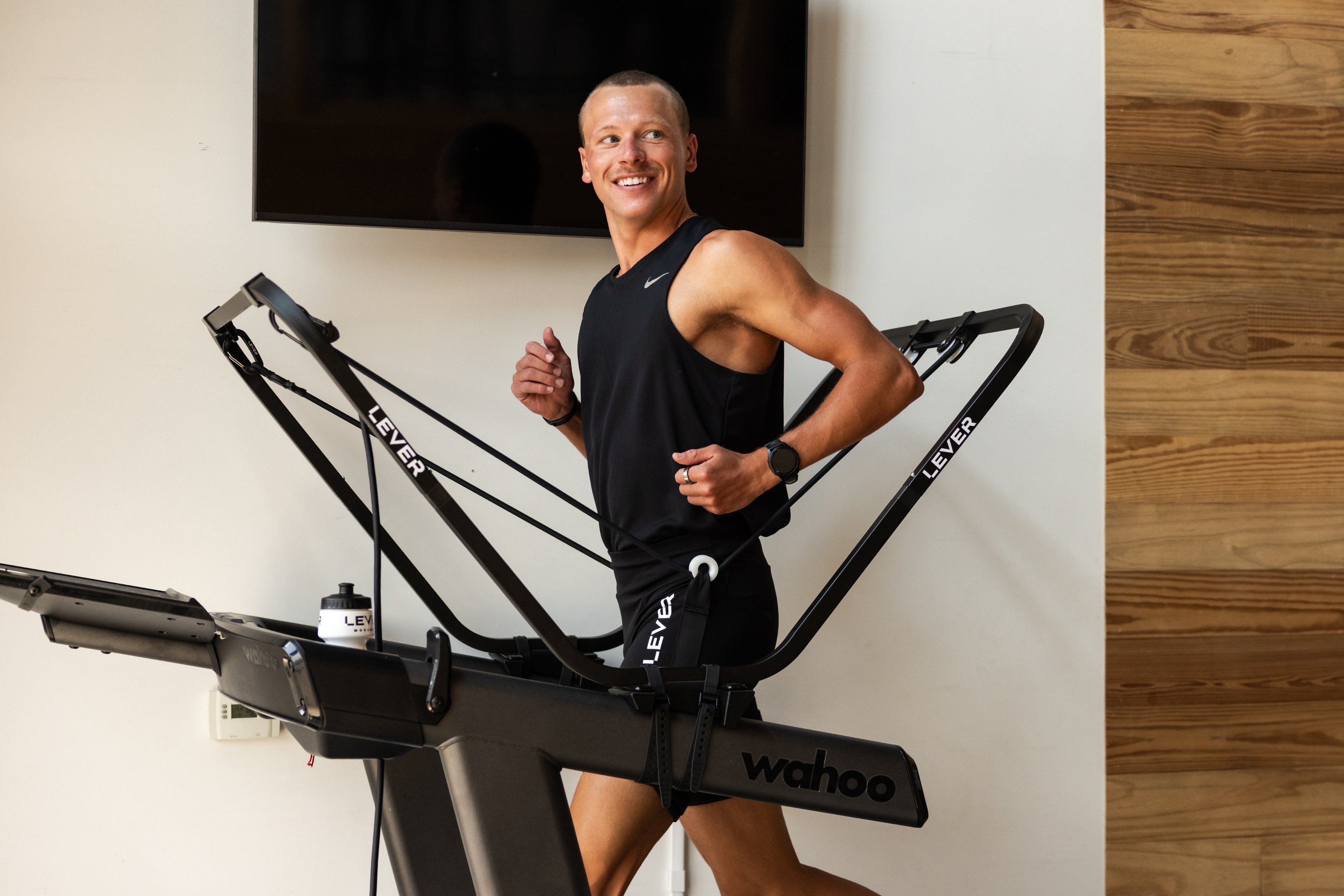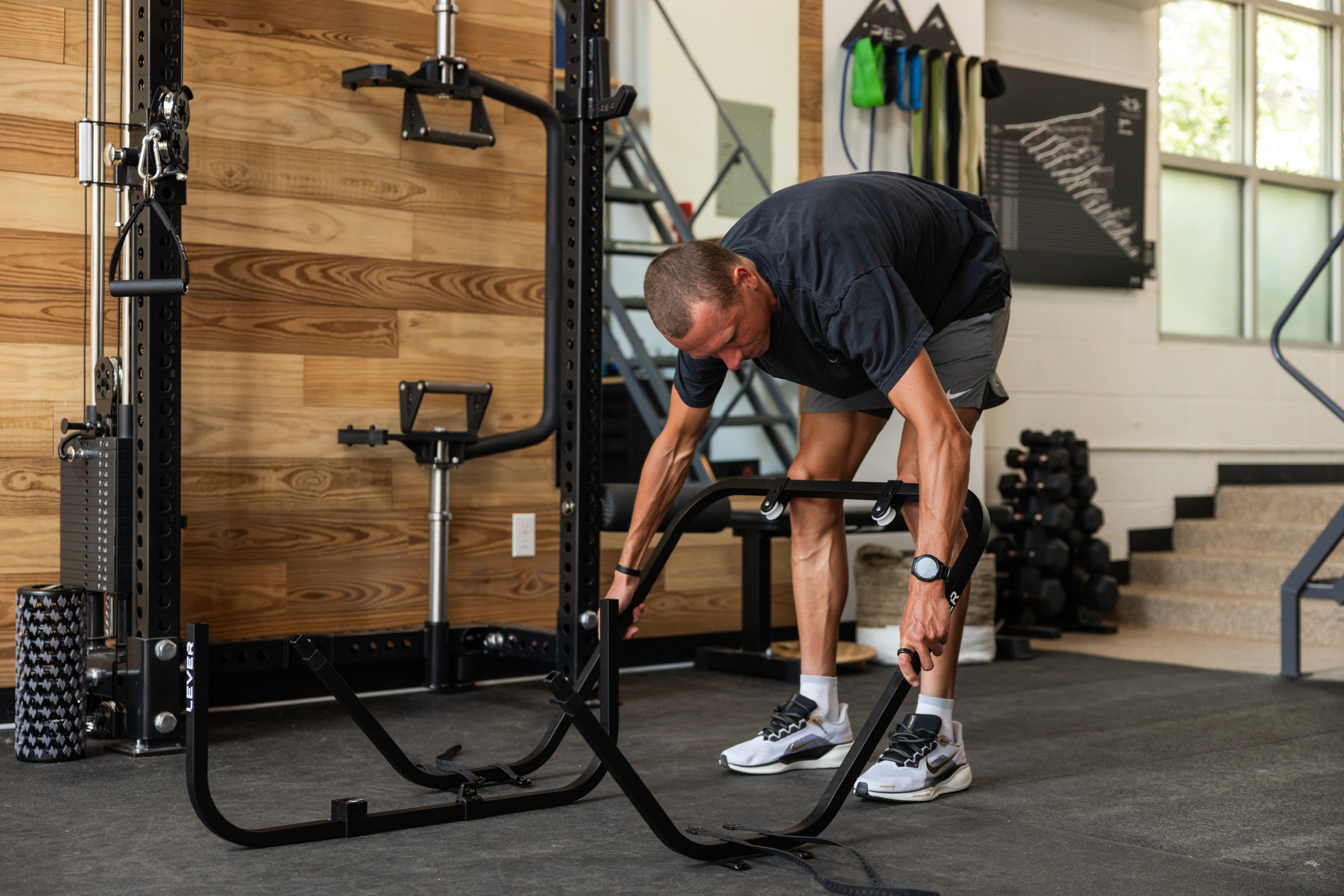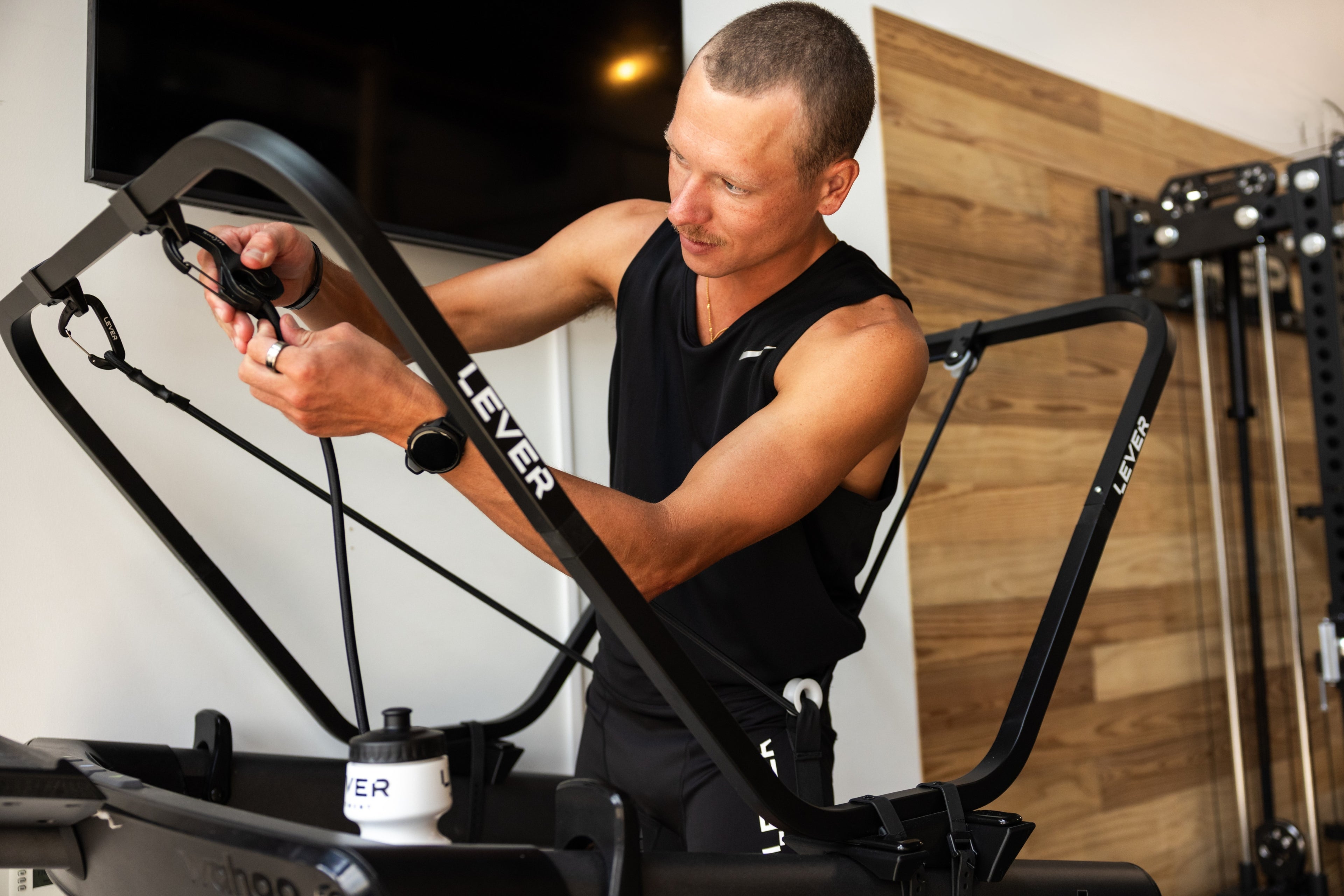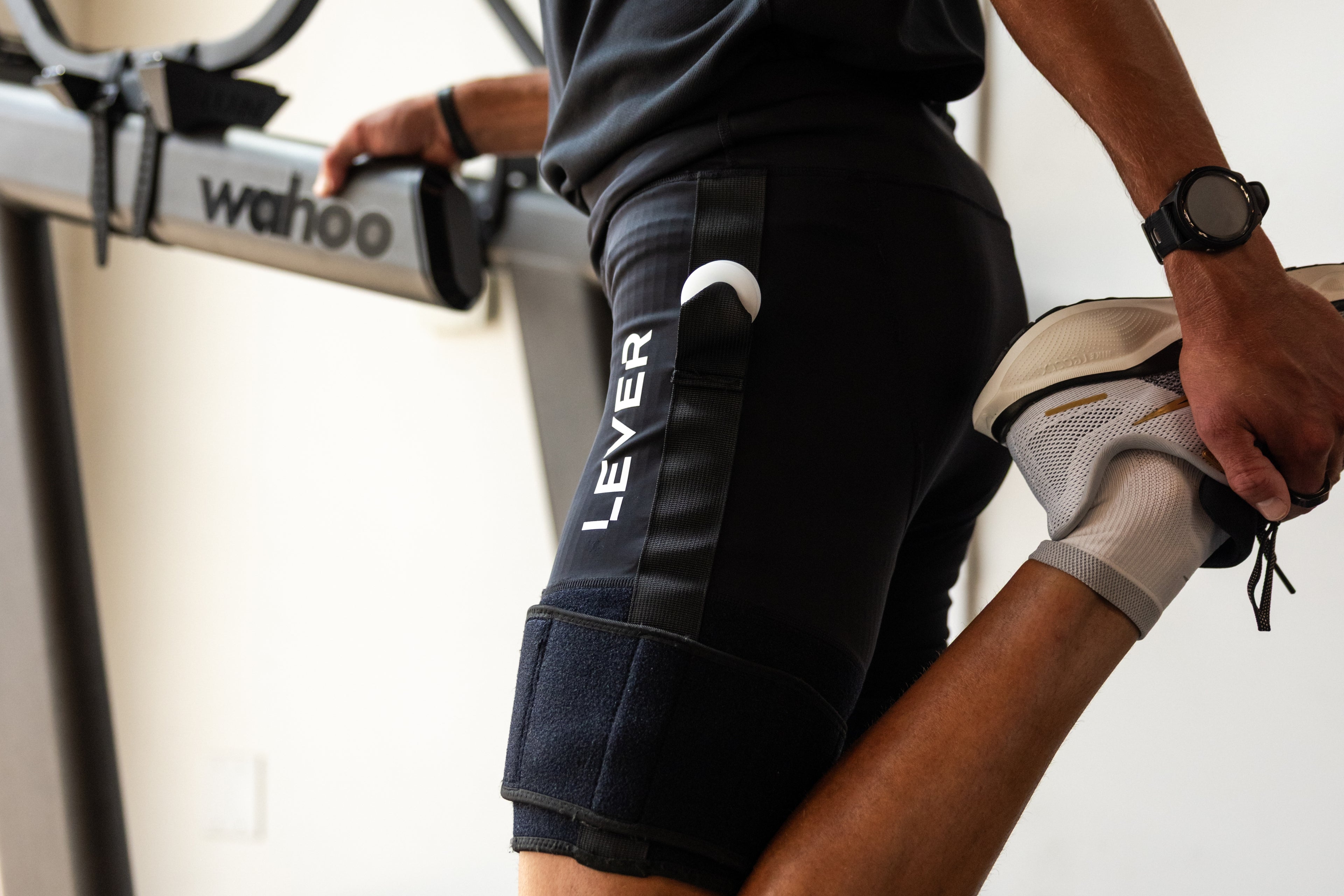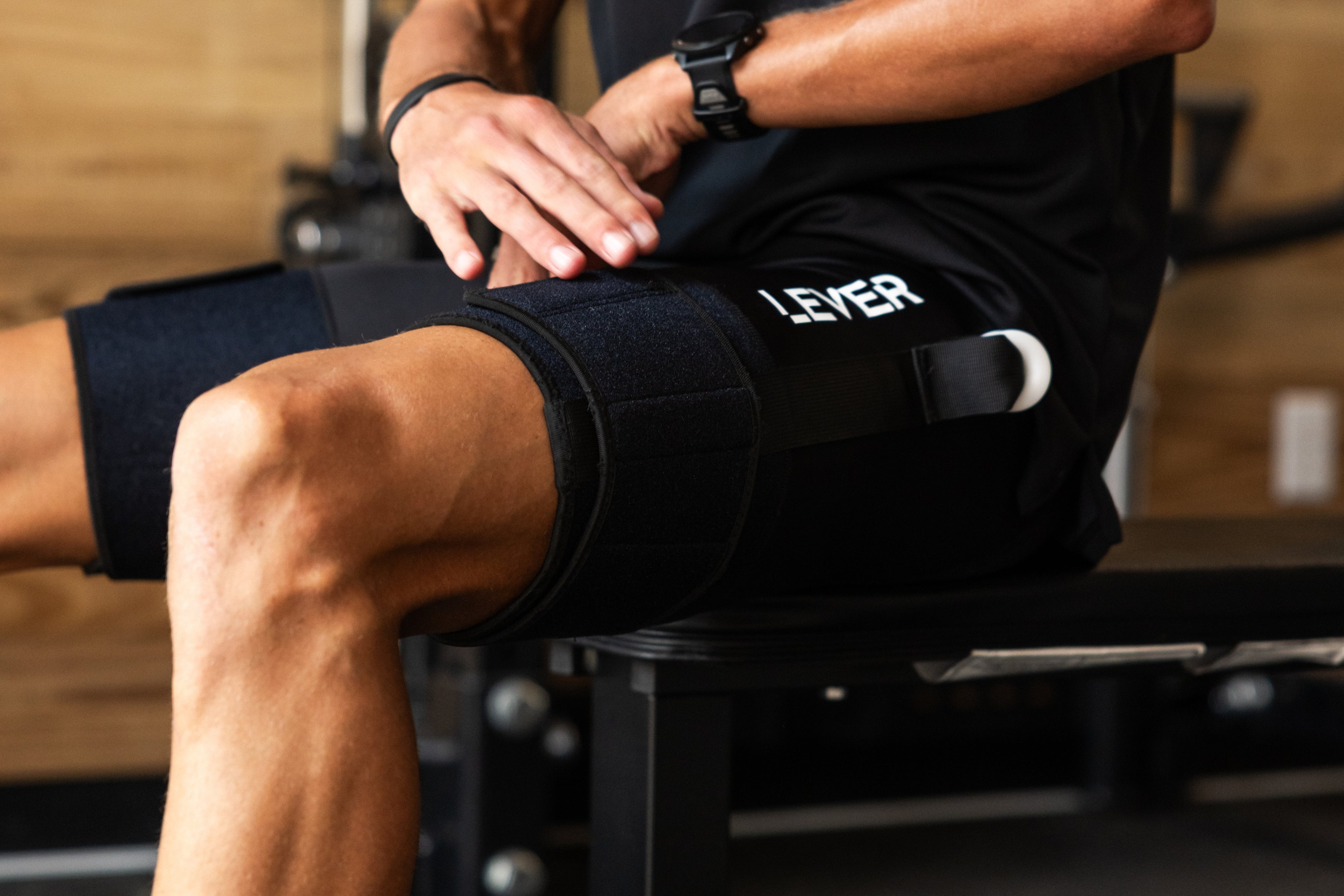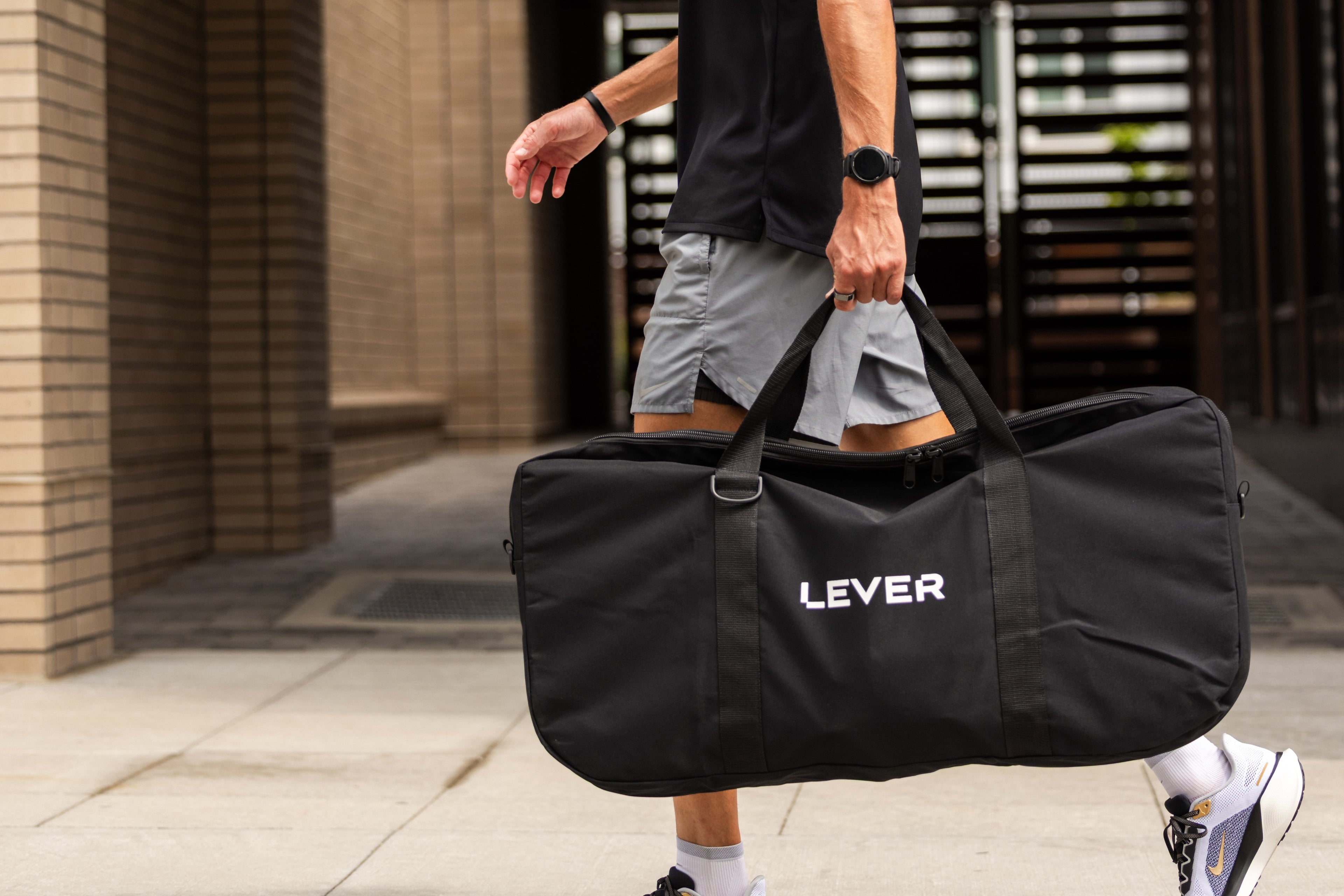Laura Philipp: Weekly LEVER Runs
A Model for Triathlon Coaches
Over the last five and a half years, Laura Philipp has incorporated the LEVER system at least once a week as a consistent part of her weekly training — not just for injury recovery or prehab, but as a core performance tool. One of the most effective sessions she uses is a high-speed interval workout designed to help her run faster for longer without increasing injury risk or mechanical load. This style workout, as discussed below, allows her to run significantly quicker than race pace for an extended amount of time, but also leaves the body fresh as she’s tuning up for racing. This brief is designed to give the triathlon coach or athlete insights into how best to incorporate LEVER like a World Champion.
Offseason Offloading
During the offseason and winter months, Laura incorporates the LEVER system into her training to maintain steady aerobic volume while minimizing mechanical stress. Without the immediate pressure of race preparation, she uses LEVER for more sustained, steady-state efforts, helping her build base fitness while preserving freshness and preventing overuse. These sessions are typically run at moderate intensities with reduced bodyweight, allowing her to maintain quality training even when fatigue is present or weather conditions limit outdoor running. This approach supports consistency through the winter and helps her transition smoothly into higher-intensity phases later in the season.
LEVER Tip: We recommend offloading most performance runs between 10-20% of bodyweight. Any more than 20% offloaded reduces the aerobic benefits.
Progression and Use Cases
As the season progresses, Laura’s use of the LEVER shifts from longer aerobic work to interval training. Additionally, during high-load training weeks, Laura may use LEVER to complete a third hard running session — something that would be difficult to sustain otherwise. This might follow a track session and a fartlek, allowing her to maintain weekly intensity while reducing recovery cost.
What makes LEVER particularly effective is how it supports neuromuscular development. By consistently training at or above race pace with reduced load, Laura’s nervous system becomes “comfortable” at high cadences and speeds. This translates to improved run economy and perceived effort at race paces.
Sample LEVER Training Session
This session typically begins with a 15–20-minute warm-up, either fully loaded or with a slight bodyweight reduction, depending on fatigue levels. The main workout consists of 4 to 6 intervals, each lasting between 4 and 8 minutes, and run at a pace of around 3:10 to 3:15 per kilometer — faster than race pace. Laura’s goal with these style workouts is to make race pace off the bike feel comfortable. Her 2:45 marathon in Nice is ~3:55/km, so by doing overspeed work 40-45 seconds per km faster than this for sustained efforts, she is training her neuromuscular system.
Here’s what her coach and husband, Philipp Seipp had to say about training the neuro system, “Running is a lot about the nervous system… and if you make your nervous system feel comfy at a certain cadence, you can train the brain better… If you feel comfortable at 3:15 for 8 minutes, then maybe you perceive 3:45 as a very comfy speed — and you can maintain it longer.”
She tracks metrics such as heart rate, pace consistency, perceived exertion, and occasionally post-session lactate to measure effort and recovery.
Applying This to Your Athletes
For many of our triathlete customers, LEVER is used about once per week. The intention varies throughout the season. In winter or general prep periods, like Laura, we recommend using it for steady-state aerobic sessions or to build volume while managing fatigue. Closer to race season, LEVER becomes a way to maintain high-speed interval work or add a third intensity session to a week without the excessive impact.
Highlighting the area of opportunity for your athlete (speed, volume, gait efficiency, recovery, running consistency, return to run, etc.) is the best way to begin. From there, you can build a long term strategy into your athlete's training plan. Consistency over a long period of time is key!
Coaching Tip
Laura’s example shows that even a single weekly session on LEVER can enhance consistency and long-term development. It also offers a strong model for injury prevention: since incorporating LEVER, Laura has experienced no major injuries, allowing her to train without extended interruptions.
Philipp said, “We enabled Laura to train consistent… and if you look at how highest performance is built, it needs this consistent development. LEVER enables that consistency.”
This approach is just as — if not more — valuable for age-group triathletes. Especially for those returning from injury, running less efficiently than the pros, or working to improve high-speed comfort, LEVER enables quality training while pushing performance. Triathletes can use it to gradually increase weekly volume, introduce higher-speed mechanics, and build confidence.











